Fruit Salad: How to Make It Perfect in 4 Steps
How many fruits in your kitchen will spoil before you eat them? The average household throws away nearly $1,500 worth of produce annually, yet a vibrant fruit salad could be your delicious solution to food waste. This refreshing dish transforms ordinary fruits into an extraordinary medley of flavors, textures, and colors that can brighten any meal or snack time. Whether you’re seeking a healthy breakfast option, a light dessert, or a crowd-pleasing party contribution, mastering the art of fruit salad creation will elevate your culinary repertoire while boosting your nutritional intake.
Table of Contents
Ingredients List
For a perfect fruit salad that balances sweetness, tartness, and texture, gather these fresh components:
Base Fruits (Choose 3-4):
- 2 cups strawberries, hulled and quartered
- 2 cups watermelon, cubed
- 2 cups pineapple chunks, fresh or canned (in juice, drained)
- 2 cups green grapes, halved
- 1 cup blueberries
- 1 cup raspberries
- 2 oranges, segmented
- 3 kiwis, peeled and sliced
- 2 mangoes, peeled and cubed
Accent Fruits (Choose 1-2):
- 1 banana, sliced (add just before serving)
- 1/2 cup pomegranate arils
- 1 cup mandarin orange segments
- 1 cup blackberries
Optional Dressing:
- 2 tablespoons honey or maple syrup
- 2 tablespoons fresh lime or lemon juice
- 1 tablespoon fresh mint, finely chopped
- 1 teaspoon vanilla extract (for dessert versions)
Substitution Ideas:
- Replace strawberries with peaches in summer
- Swap watermelon for cantaloupe or honeydew
- Use frozen fruits when fresh options aren’t in season
- Consider dried fruits (cranberries, apricots) for added texture
- For exotic flair, incorporate dragon fruit, papaya, or lychee
Timing
- Preparation time: 15-20 minutes
- Chilling time (optional but recommended): 30 minutes
- Total time: 45-50 minutes
Step-by-Step Instructions
Step 1: Select and Prepare Your Fruits
Choose fruits that offer complementary colors, textures, and flavors for your fruit salad. Wash all fruits thoroughly under cool running water, even those you plan to peel. Remove stems, seeds, pits, and tough skins as needed.
Pro tip: Select fruits at varying stages of ripeness – some perfectly ripe for immediate consumption and others slightly underripe to maintain structure as the salad sits. For a seasonal approach, aim for at least 75% local, in-season fruits for peak flavor and nutrition.
Step 2: Cut Fruits to Appropriate Sizes
Cut larger fruits into bite-sized pieces, keeping in mind that they should be easy to eat with a spoon. Aim for relatively uniform sizes to ensure balanced bites of your fruit salad, but vary shapes to create visual interest.
Pro tip: For apples, pears, and bananas that brown quickly, toss in 1-2 teaspoons of lemon juice immediately after cutting. When including both soft berries and firmer fruits, cut firmer options slightly smaller to create a more consistent eating experience.
Step 3: Combine and Dress
In a large mixing bowl, gently combine your prepared fruits, starting with the sturdiest varieties and ending with the most delicate. For an elevated fruit salad, whisk together your chosen dressing ingredients in a separate bowl, then drizzle over the fruits and toss gently.
Pro tip: Reserve highly perishable or quick-browning fruits like bananas and apples to add just before serving. For a show-stopping presentation, arrange fruits in color gradients rather than mixing completely – this creates a rainbow effect that makes your fruit salad instantly Instagram-worthy.
Step 4: Chill and Serve
Cover your fruit salad and refrigerate for at least 30 minutes before serving to allow flavors to meld and fruits to chill thoroughly. Just before serving, give the salad a gentle toss and add any reserved delicate fruits.
Pro tip: Serve in a glass bowl to showcase the vibrant layers of your creation. For individual portions, use stemless wine glasses or mason jars to highlight the colorful composition. A chilled bowl will keep your fruit salad crisp longer during summer gatherings.
Nutritional Information
This fruit salad isn’t just delicious – it’s packed with essential nutrients. Here’s what you’ll get in a typical 1-cup serving (exact values vary based on fruit selection):
- Calories: 100-150
- Carbohydrates: 25-30g
- Dietary Fiber: 3-5g
- Protein: 1-2g
- Fat: 0-1g
- Vitamin C: 80-150% of Daily Value
- Vitamin A: 10-25% of Daily Value
- Potassium: 8-12% of Daily Value
- Folate: 10-15% of Daily Value
Healthier Alternatives for the Recipe
While a fruit salad is already a nutritional powerhouse, you can enhance its health benefits with these smart modifications:
- Skip added sweeteners and let the natural fruit sugars shine
- Replace traditional honey dressing with a chia seed pudding base for added omega-3s
- Add a sprinkle of cinnamon to help regulate blood sugar levels
- Incorporate superfood berries like goji or acai for additional antioxidants
- Include cubed avocado for healthy fats that help absorb fat-soluble vitamins
- Mix in Greek yogurt for a protein boost (approximately 10g per 1/2 cup)
- Add unsweetened coconut flakes for texture and tropical flavor
- Include chopped nuts for protein and healthy fats (ideal for those following low-carb diets)
Serving Suggestions
Elevate your fruit salad from side dish to culinary star with these creative serving ideas:
- Layer with granola and yogurt in parfait glasses for a beautiful breakfast
- Serve in hollowed-out watermelon halves for an impressive party presentation
- Use as a topping for pancakes, waffles, or French toast
- Serve alongside grilled chicken or fish for a refreshing dinner contrast
- Place small cups of fruit salad on a platter surrounded by cheese and crackers
- Thread onto skewers for fruit kebabs – perfect for children’s parties
- Freeze in popsicle molds with a splash of coconut water for healthy summer treats
- Use as cake filling between vanilla sponge layers for a lighter dessert option
Common Mistakes to Avoid
Even a simple dish like fruit salad can go wrong. Here’s how to avoid common pitfalls:
- Using overripe fruits – They’ll become mushy and deteriorate quickly
- Cutting fruits too far in advance – Some varieties discolor and release too much juice
- Adding bananas or apples without acidulation – They’ll brown and become unappetizing
- Using fruits with widely different shelf lives – Some will spoil while others remain fresh
- Over-mixing delicate fruits – Berries especially can break down and create a soggy texture
- Adding too much dressing – It can overpower the natural fruit flavors
- Forgetting to drain canned fruits – Excess syrup makes the salad too sweet and soggy
- Neglecting color variety – Visual appeal is crucial for appetizing fruit salad
Storing Tips for the Recipe
Maximize the shelf life and quality of your fruit salad with these storage strategies:
- Store in an airtight glass or plastic container to prevent absorption of refrigerator odors
- Place a paper towel under the lid to absorb excess moisture
- Keep at the front of the refrigerator at 34-38°F (1-3°C) – the optimal temperature zone
- Consume within 3-4 days for best quality
- For extended storage, squeeze fresh citrus juice over the top as a natural preservative
- Store components separately if preparing more than 24 hours in advance
- Freeze portions in airtight containers for smoothie bases (up to 3 months)
- If including apples or bananas, store them separately and add just before serving
Conclusion
A perfect fruit salad combines art and science: balancing flavors, textures, and colors while maximizing nutritional benefits. This versatile dish adapts to any meal, season, or occasion, offering endless creative possibilities. With proper preparation and storage, it provides days of healthy, delicious eating from just minutes of kitchen work.
Try creating your own perfect fruit salad today and share your results in our comments section! We’d love to see your creative combinations and hear which serving suggestion worked best for you.
FAQs
How can I keep my fruit salad from turning brown? Toss fruits prone to browning (apples, bananas, pears) in lemon or lime juice immediately after cutting. For bananas specifically, add them just before serving, or use slightly underripe ones that brown more slowly.
What’s the best fruit combination for a traditional fruit salad? Classic combinations include strawberries, blueberries, pineapple, grapes, and melon. This mix provides great color contrast, complementary flavors, and similar shelf lives.
How can I make my fruit salad sweeter without adding sugar? Include naturally sweet fruits like ripe pineapple, mango, or watermelon. Alternatively, add a small amount of orange or apple juice concentrate, or sprinkle with a touch of cinnamon which enhances perceived sweetness.
What fruits should I avoid putting in fruit salad? Avoid very soft fruits like ripe peaches or overripe bananas that quickly turn mushy. Also, be cautious with fruits that have strong flavors that might overpower others, like grapefruit or passion fruit, unless they’re specifically featured.
Is fruit salad good for weight loss? Absolutely! Fruit salad provides essential nutrients, fiber, and natural sweetness with relatively low calories. Just be mindful of portions and any added sweeteners, as fruits do contain natural sugars.
What can I add to fruit salad to make it more filling? For added staying power, incorporate Greek yogurt, cottage cheese, nuts, seeds, or whole grains like quinoa or farro. This transforms your fruit salad into a complete meal with protein and complex carbohydrates.
Your Feedback Matters
There are no reviews yet. Be the first one to write one.

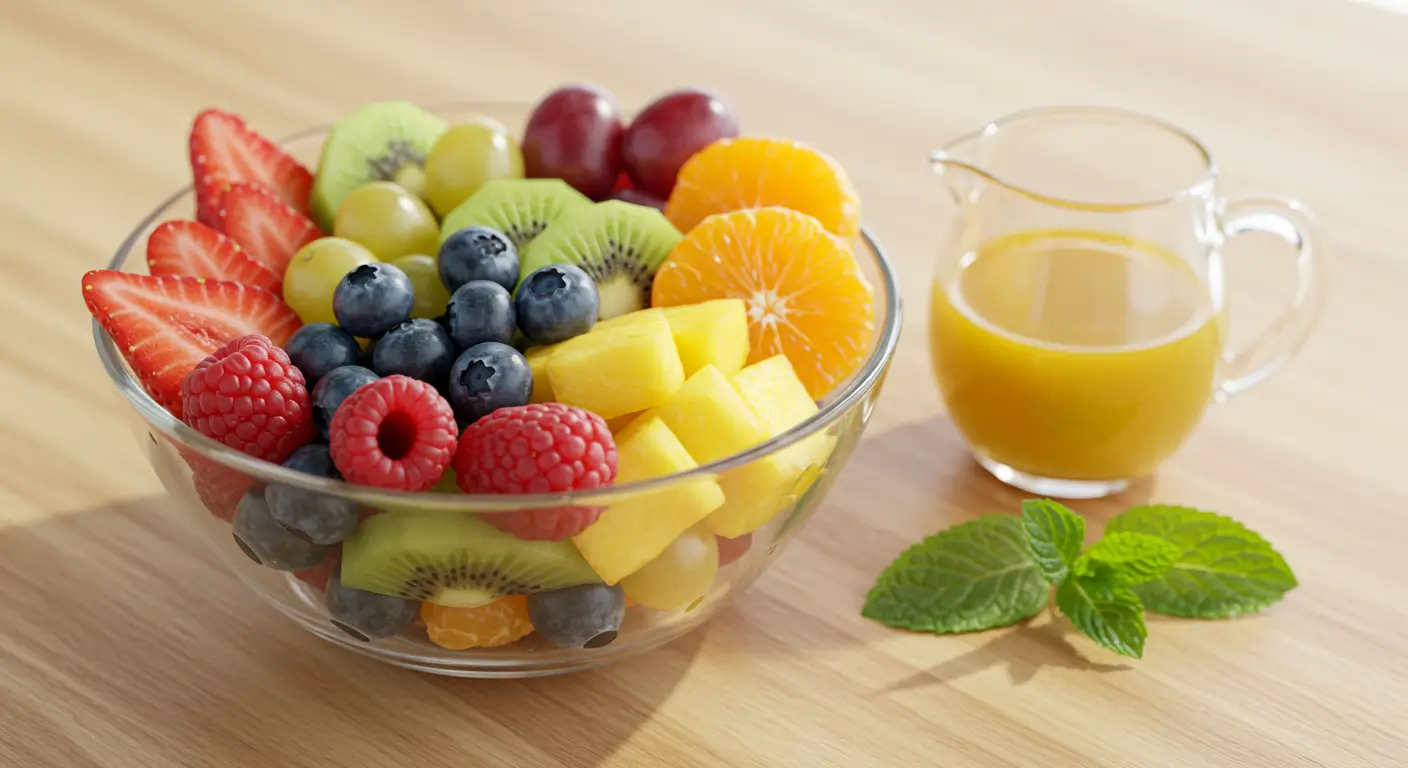

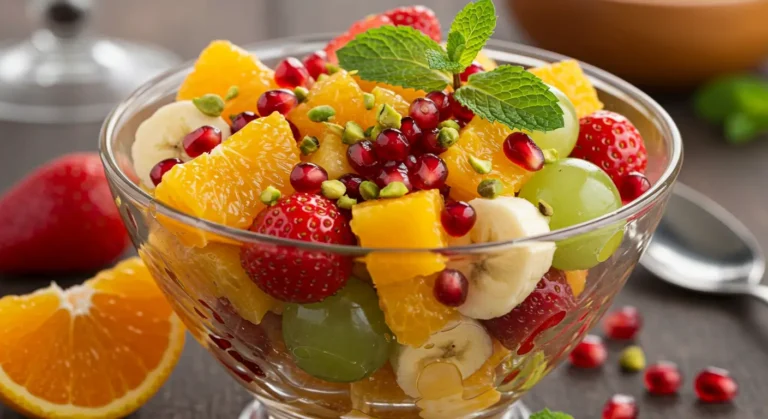
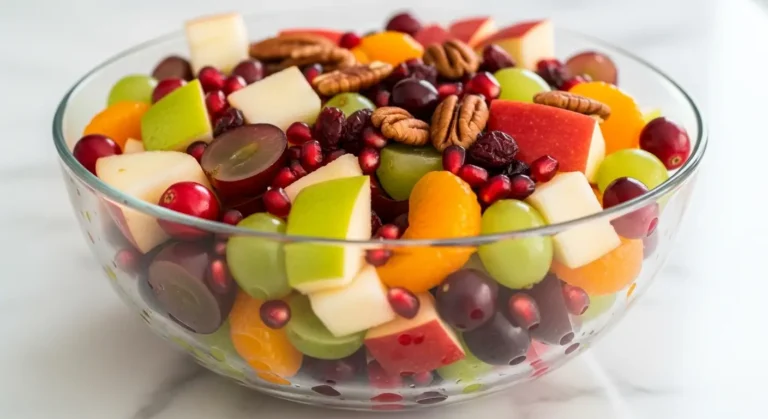
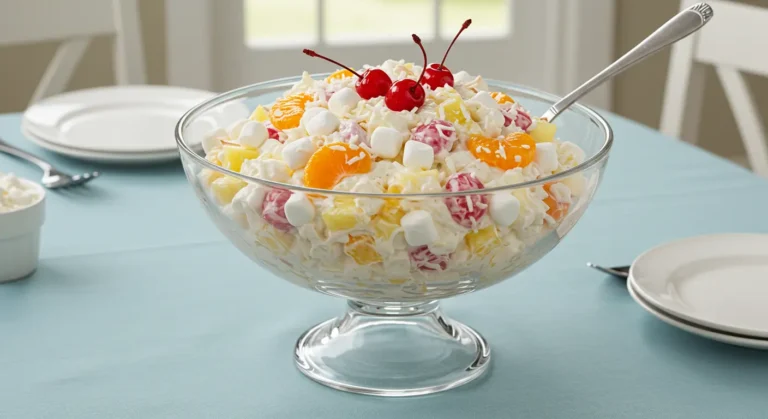
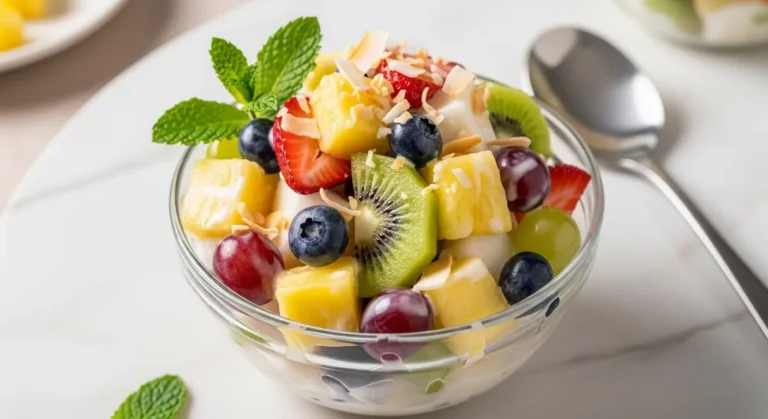
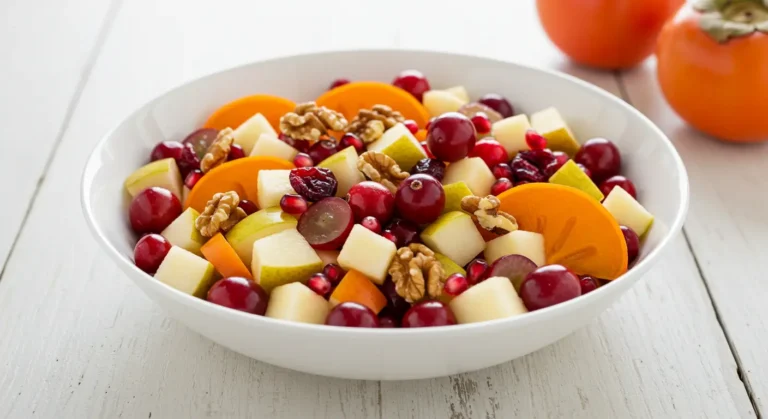
4 Comments
Comments are closed.